Visualising sound 07
Compression action diagrams
- Video
- Script
Welcome to this tutorial on compression action diagrams.
- the relationship between the input and output levels of an audio signal passing through an audio compressor or limiter, expressed as the ratio
- the level, or threshold at which compression is triggered
- any non-linearities in the value of the ratio around the threshold caused by the electronic design of a compression device or controlled by a device's compression knee and attack controls
Caption - Axis & signal level
The compression action diagram has two axis, input level and output level. A diagonal line plots the relationship, or ratio, of input and output signal level for the range of levels the device can accommodate, otherwise known as it's dynamic range.
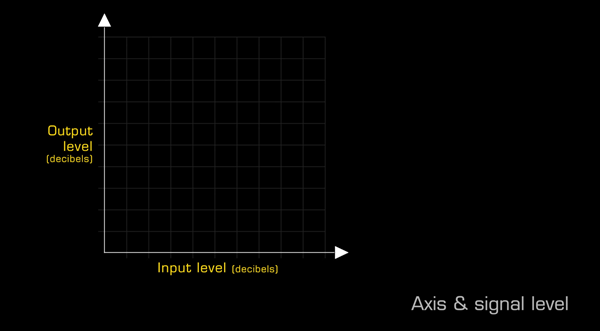
This example shows compression turned off. Audio signals at any level within the dynamic range of the device will pass through unaffected. The signal will output at the same level as the input.
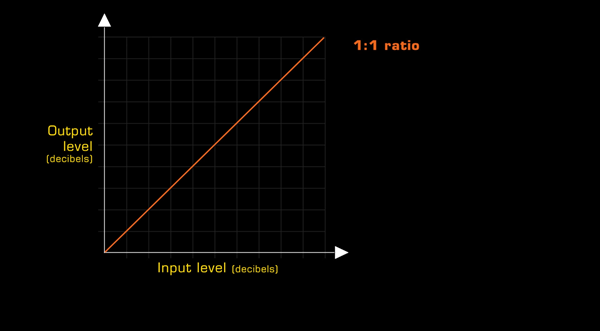
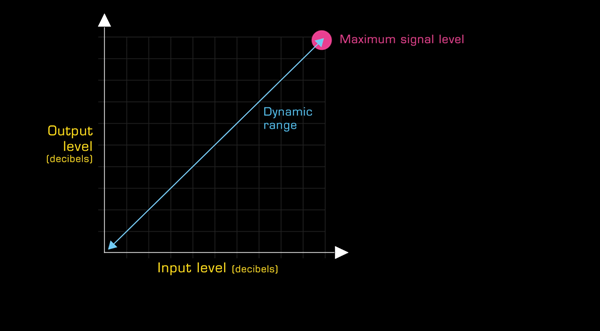
Caption - Threshold level
A vertical line shows the level which must be reached before the signal will be turned down.
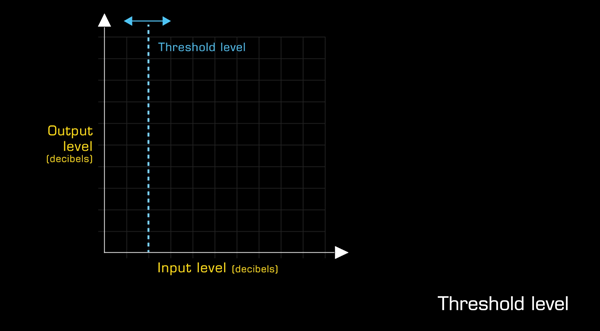
In this example the threshold is set but no compression is being applied because the compression ratio is still at 1:1.
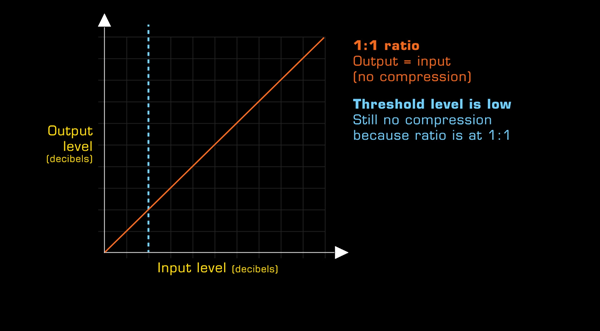
In this example the ratio has been set at 2:1 and the audio signal is being turned down when it exceeds the threshold level.
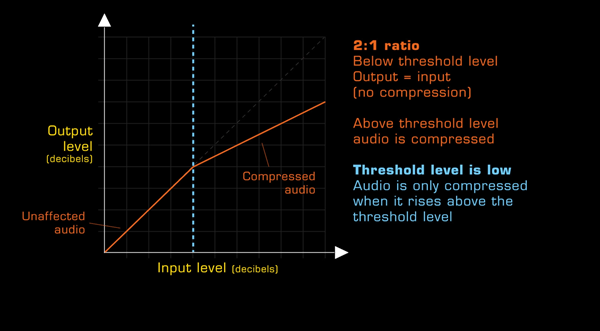
In this example the threshold level has been reduced and the ratio increased to 4:1.
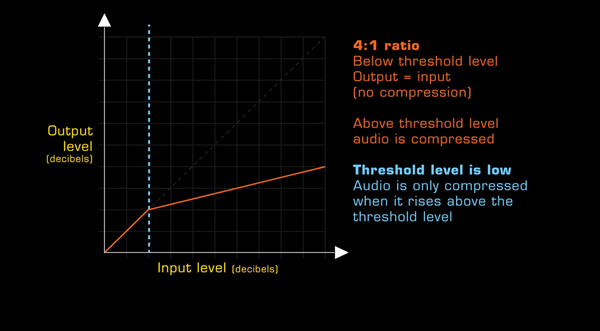
At infinity:1 the compressor is acting as a limiter and the audio signal is attenuated to the threshold level. The signal is not permitted to rise above the threshold level. Any ratio above 20:1 can be considered as limiting.
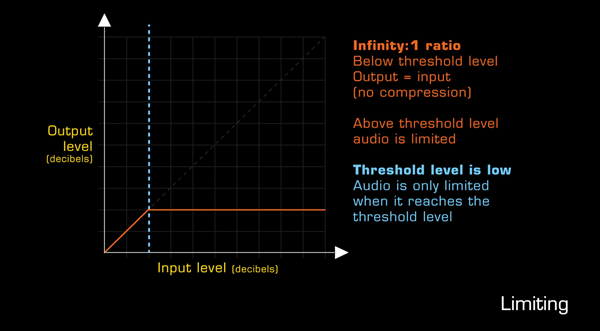
Caption - Knee characteristics
A curve in the line plotting the signal around the threshold level indicates that the ratio rises gradually until it is reached. Here we can see so called Soft-knee and Hard-knee characteristics.
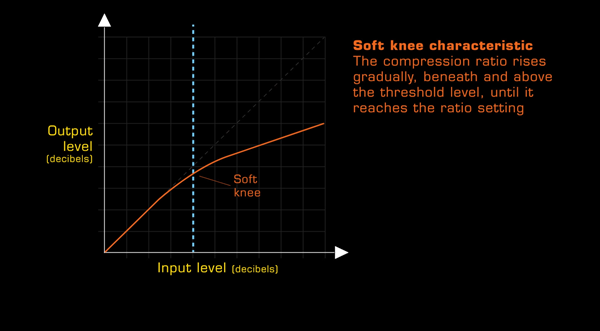
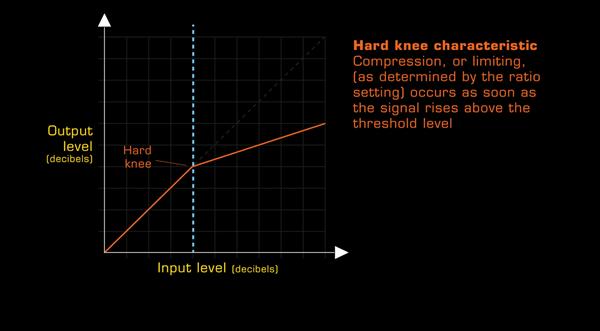
Caption - Thanks for watching
The script for this video, with accompanying images, can be found at projectstudiohandbook.com
We suggest you subscribe at our YouTube channel, and join our mailing list at our website to receive notification of new videos, blog posts and subscriber only extras.
Thanks for watching.